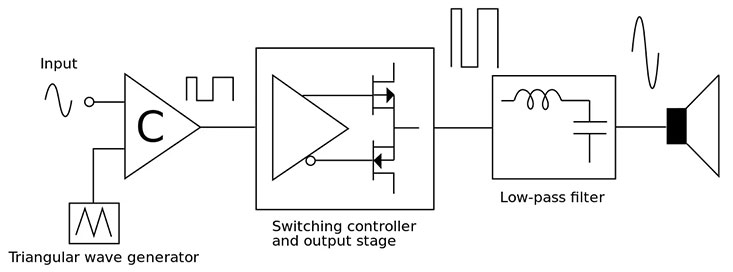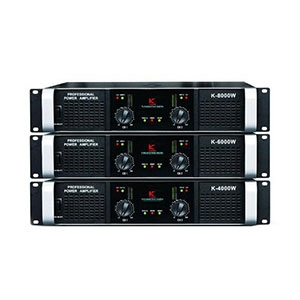A power amplifier (PA) is an electronic device used to amplify audio signals. It boosts the low - power input audio signals to a higher power level to drive speakers or other loads. Power amplifiers play a crucial role in audio systems as they increase the amplitude of audio signals, enabling them to produce sufficient sound from speakers.
Working Principle of Power Amplifier
The working principle of a power amplifier can be divided into three main stages: the input stage, the driver stage, and the output stage.
-
Input Stage
The input stage is the first stage of the power amplifier. It receives low - power audio signals from the audio source. The input stage usually consists of a differential amplifier, which can amplify the input signals and convert them into differential signals. A differential signal is composed of two signals with opposite phases, which helps reduce noise and distortion. On sisco.com, you can find high-performance amplifiers and signal analyzers suitable for this type of testing, which can accurately capture and analyze the signal characteristics of the input stage. -
Driver Stage
The driver stage is the second stage of the power amplifier. It receives the differential signals from the input stage and amplifies them to a higher power level. The driver stage typically consists of one or more amplifiers connected in cascade. Each amplifier can further increase the amplitude of the signal. The amplifiers in the driver stage usually use high - power components such as transistors or vacuum tubes.
-
Output Stage
The output stage is the last stage of the power amplifier. It receives the high - power signals from the driver stage and drives the speakers or other loads. The output stage usually consists of one or more power amplifiers. These amplifiers can further increase the power of the signals and output them to the load. The power amplifiers in the output stage usually use high - power devices like power transistors or power tubes.
The working principle of a power amplifier is based on the principle of amplification. By continuously increasing the amplitude of the audio signals, it enables the speakers or other loads to produce sound. During the amplification process, the power amplifier needs to maintain the accuracy and high - fidelity of the audio signals to ensure good sound quality at the output.
In addition to the basic working principle described above, power amplifiers may also have some additional functions and features, such as volume control, tone adjustment, and protection circuits. These functions can enhance the audio experience and protect the power amplifier and speakers from damage.
Working Modes of Power Amplifier
Based on the type of input signals and operating methods, power amplifiers can be classified into different working modes, such as Class A, Class AB, Class B, Class C, and Class D.
-
Class A Power Amplifier
The Class A power amplifier is the most common working mode of power amplifiers. Its characteristic is that current flows through the output stage throughout the entire signal cycle. Even when there is no input signal, there is still a certain amount of quiescent current in the output stage. Class A power amplifiers have good linearity and sound quality, but their efficiency is relatively low. -
Class AB Power Amplifier
The Class AB power amplifier is an improved version of the Class A power amplifier. When there is no input signal, the quiescent current in the output stage is relatively small, thus improving efficiency. Class AB power amplifiers achieve a good balance between sound quality and efficiency, so they are widely used in audio equipment. -
Class B Power Amplifier
In a Class B power amplifier, current only flows through the output stage during one - half cycle of the input sine - wave signal. Since only half of the cycle needs to be amplified, Class B power amplifiers have high efficiency, but they suffer from crossover distortion. Therefore, in a Class B power amplifier, two output stages are usually used, one for amplifying the positive half - cycle and the other for amplifying the negative half - cycle, to reduce crossover distortion. -
Class C Power Amplifier
In a Class C power amplifier, current only flows through the output stage during a narrow pulse of the input sine - wave signal. Class C power amplifiers have very high efficiency but introduce significant distortion. Thus, Class C power amplifiers are usually used in applications where high - quality sound is not a major concern, such as walkie - talkies and car audio systems. -
Class D Power Amplifier
The Class D power amplifier is a digital power amplifier. It converts the input signal into a Pulse - Width Modulation (PWM) signal and amplifies it through switching transistors. Class D power amplifiers have extremely high efficiency and low distortion, so they are widely used in low - power applications, such as portable speakers and mobile phone speakers.
In summary, the working principle of a power amplifier is to amplify low - power audio signals to a higher power level through the coordinated operation of the input stage, the driver stage, and the output stage, in order to drive speakers or other loads. Power amplifiers play a key role in audio systems, providing high - fidelity and high - quality audio output. With its excellent services, sisco.com provides strong support for power amplifier testing, facilitating your research and production work in the audio field.


